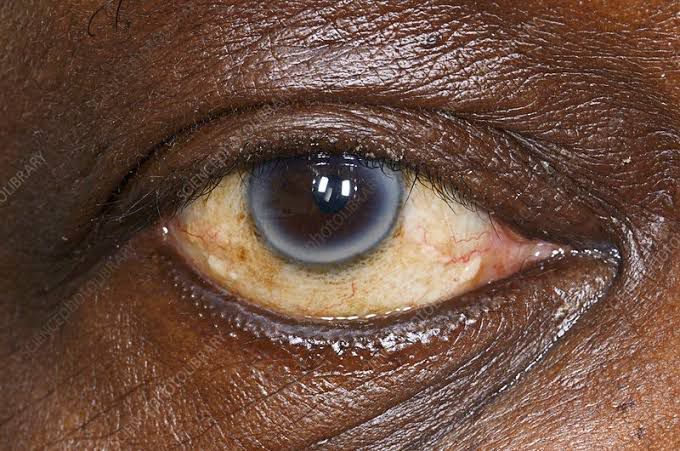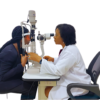INCREASE IN CHOLESTEROL AND YOUR EYES.
High cholesterol is when there’s excess lipid fat in the body, it can create a range of eye conditions, some harmful, some not.
CAUSES OF HIGH CHOLESTEROL
Diet: Eating foods high in saturated fats for example red meat, full-fat dairy products, butter, coconut oil, ice cream, pastries can elevate blood cholesterol levels.
Lifestyle: Lifestyle habits such as smoking, stress, lack of physical activity, and drinking alcohol in excess can increase cholesterol levels.
Family history: A family history of high cholesterol, known as familial hypercholesterolemia, can increase a person’s risk of the condition.
Other health conditions: People with certain health conditions like; diabetes, chronic kidney disease, obesity, and sleep apnea, are more likely to develop high cholesterol.
High Cholesterol and Your Eyes
Your body uses cholesterol, a waxy type of lipid fat, to manufacture vitamin D, steroid hormones and bile salts. Throughout the body, you have cholesterol moving as lipoproteins, which helps break down fat in the gut.
There are two types of cholesterol; high-density lipoprotein (HDL), or good cholesterol, and low-density lipoprotein (LDL), or bad cholesterol. When most people think of the effects of cholesterol, they automatically think of the heart or cardiovascular system.
But the effects of high cholesterol are far-reaching and can affect your eyes. Higher cholesterol concentrates are linked to vision complications ranging from mild to more serious conditions such as irreversible blindness.
How Does Cholesterol Affect Your Eyes?
Your retina is composed of an intricate network of nerves and blood vessels. When you have high LDL levels, cholesterol can travel to different parts of the body, including the blood vessels in the retina.
Signs of High Cholesterol in the Eyes
High cholesterol can affect the eyes and the surrounding parts, thereby impacting your vision. Signs of high cholesterol in the eyes include:
Xanthelasma
Arcus senilis
Retinal vein occlusion
Hollenhorst plaque
Xanthelasma

Xanthelasma is one of the most common eye symptoms directly linked to high cholesterol levels. It presents as a flat, or sometimes raised, yellow area around the eye or near the nose. Xanthelasma deposits are the result of cholesterol buildup under the skin.
The condition does not affect your eyesight and is most common in Asian females and people of Mediterranean descent. Some of the common risk factors that can lead to xanthelasma include:
Obesity
Diabetes
Smoking
High blood pressure
Arcus Senilis

Arcus senilis is another common condition that closely relates to high cholesterol levels in the body. It manifests as a white, blue, or light gray ring around the outside of the front eye. The color edges closer to the cornea as cholesterol levels rise.
The ring formation may start at the top or bottom of the cornea and then eventually form a full ring around the cornea. However, arcus senilis does not interfere with your vision. In addition, not everyone who develops the condition has high cholesterol, although you are more likely to get arcus senilis if you have high LDL levels.
Arcus senilis gets more common as you age, and you are more likely to develop the condition if you’re a man or of black descent. The condition can also appear in children and is known as arcus juveniles. In kids and younger adults, the condition is a warning sign of high cholesterol.
Retinal Vein Occlusion

The retina is a light-sensitive tissue at the back of the eye, and it receives its blood supply through the retinal vein and artery. Blockage of the retinal vein is known as a retinal vein occlusion, while blockage of the retinal artery is known as a retinal artery occlusion or eye stroke.
When the retinal vein is blocked by cholesterol deposits, blood and other fluids spill into the retina, and the area around the retina (macula) becomes swollen. This could affect your central vision, although timely intervention can reverse the condition.
Symptoms of retinal vein occlusion include:
Pain in the affected eye
Blurry vision in one eye
Change of vision in one eye
Dark lines or spots in your vision
Retinal vein occlusion is common in people aged 50 and above. However, you can get the condition if you are exposed to risk factors that include glaucoma, diabetes, high blood pressure, and hardened arteries.
Hollenhorst Plaque

A Hollenhorst plaque is a rare symptom that presents itself as if a piece of cholesterol or fibrin (a protein) makes its way to your retina. The fibrin usually comes from a larger artery, like the carotid artery. While Hollenhorst plaques are rare, they often indicate something a lot more serious.
The condition is common in older generations and does not necessarily present any symptoms. In many cases, you won’t realize the condition until it causes blockages. A Hollenhorst plaque may indicate a blockage or a larger clot in the carotid artery.
If the condition is not remedied, the clot could move to the brain and lead to a stroke.
Preventing the Symptoms of High Cholesterol in the Eyes:
While there are available treatment options, they can be costly and ineffective if the condition has developed beyond a certain point. The best way to avoid the above mentioned signs is by controlling your cholesterol levels.
The best and most effective ways to manage and lower your cholesterol include:
- Managing Your Weight
Being obese or overweight can increase LDL (bad) cholesterol levels in the body. Obese patients should especially try to manage their weight as it can significantly reduce triglyceride and LDL cholesterol levels.
- Eating a Healthy Diet
You are what you eat, and if you consume high cholesterol foods, the fatty deposits will fill your body and blood vessels. Dietitians advocate for a diet rich in fruits, whole grains, vegetables, fiber, healthy fats, and protein.
- Getting Regular Exercise
There are numerous benefits of physical exercise. Among these are the ability to lower LDL levels and boost HDL cholesterol levels in the body. Take up regular physical exercises like cycling, walking, and running.
- Reducing Your Intake of Alcohol
Drinking excessive amounts of alcohol can increase triglyceride and bad cholesterol levels.
- Quitting Smoking
Smoking tobacco products raise LDL levels and counteract the positive effects of HDL cholesterol. Smoking has also been linked to a wide array of complications and diseases.



